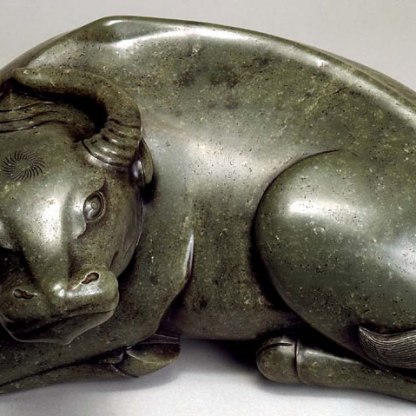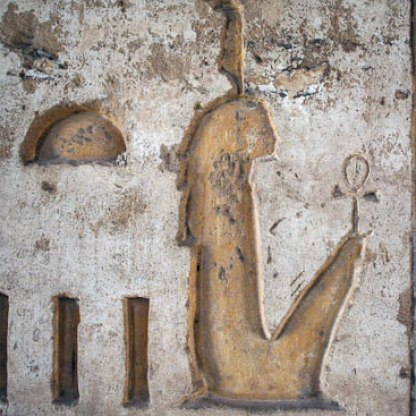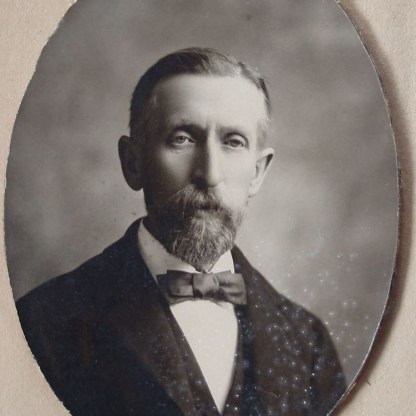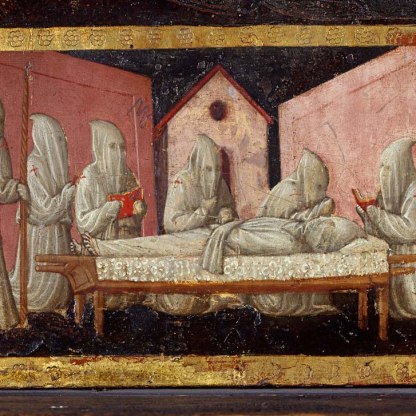Grave Goods
The Egyptians imagined that when they died their actions on earth would be judged and, if their heart was found to be righteous, they would gain admission to the Field of Reeds. This afterlife was envisaged as a perfect continuation of the daily life they had enjoyed on earth. They also believed that they would go into the beautiful west, and would descend into the earth to be with Geb, the god of the earth. Here they would experience rebirth through various means, particularly when the sun god passed through the underworld each night.
Corpses were carefully preserved – mummified – since the body would be needed beyond the grave as a container for the soul. From the time of the Middle Kingdom (2055–1650 BCE), coffins were humanoid in shape so that they could act as a surrogate body should the mummy be damaged or destroyed.
Magical objects were placed in or around the coffin to aid the passage through the underworld and to help the deceased in the afterlife. Around the coffin of Nakhtefmut in the Fitzwilliam, for example, were found an array of such items.
The internal organs of the deceased – removed during the mummification process – were often placed in jars called canopics. The lids of these were often carved into the form of the four sons of the god Horus: the baboon Hapy, Qebhsenuef the hawk, Imsety, represented as a man with a beard, and the jackal Duamutef.
By the time Nakhtefmut was buried, it was the custom to replace the organs in the stomach cavity of the mummified body, but wooden statuettes of the sons of Horus were still included in the tomb.
Just beyond Nakhtefmut’s coffin was found his shabti box. Life in the Field of Reeds was blissful, but there was still work to be done. Shabtis, also called shawabtis or ushabtis, were figures placed in the tomb that, when called upon, would come to life and work on behalf of their dead owner.
Left is an ushabti from a tomb belonging to Horkheb, a courtier to the king, who died sometime between 715 and 610 BCE. Like the deceased in whose tomb the ushabti was found, he is shown mummified. His hands, however, are freed from their bindings and he holds a hoe and a seed bag, ready to undertake agricultural work for Horkheb in the afterlife.
An inscription runs down his front, as though Horkheb is addressing the figure:
O Ushabtis, if someone calls for me to do any of the works which are done in the realm of the dead, to cultivate the fields, to irrigate the lands beside the bank of the river, to transport sand of the east and west by boat ... ‘Here I am’ you shall say, if someone calls my name ...
At first it was usual to have only one shabti per tomb, but by the end of the New Kingdom in Egypt, c. 1069 BCE, the ideal number was 365 – one for each day of the year. These 365 were subdivided into groups of ten each with an overseer shabti, taking the total of tomb figures to 401. A particularly wealthy or important corpse might have several sets.
In the Old Kingdom (2686–2160 BCE), servant statues were included in burials, and during the Middle Kingdom (2055–1650 BCE) it became common for wealthy tombs to contain wooden models of men and women, performing the specific task that would be useful to the deceased in the afterlife.
The Fitzwilliam owns several of these from the tomb of Khety, who died during the early Twefth Dynasty – some time between 1963 and 1862 BCE. Below, we see a rowing boat and a sailing boat for transport up and down the Nile, and a group of bakers and brewers preparing the bread and beer that Khety would enjoy in the life beyond.
Other highlight objects you might like
Other pathways and stories you might like
Sign up to our emails
Be the first to hear about our news, exhibitions, events and more…






